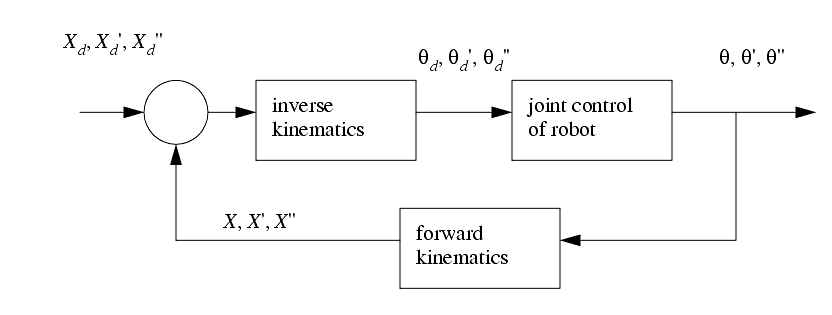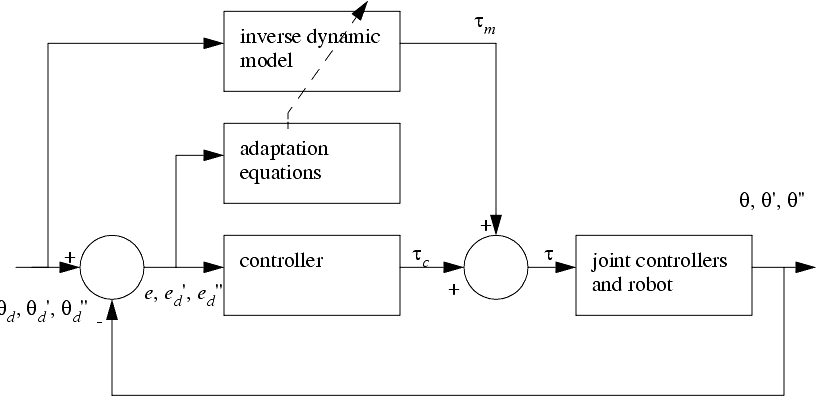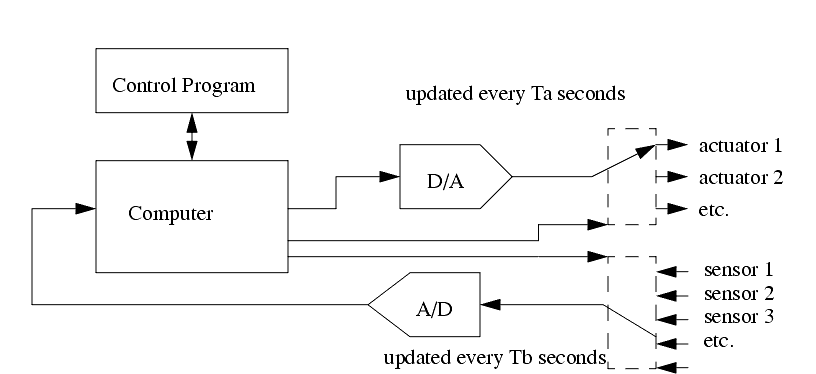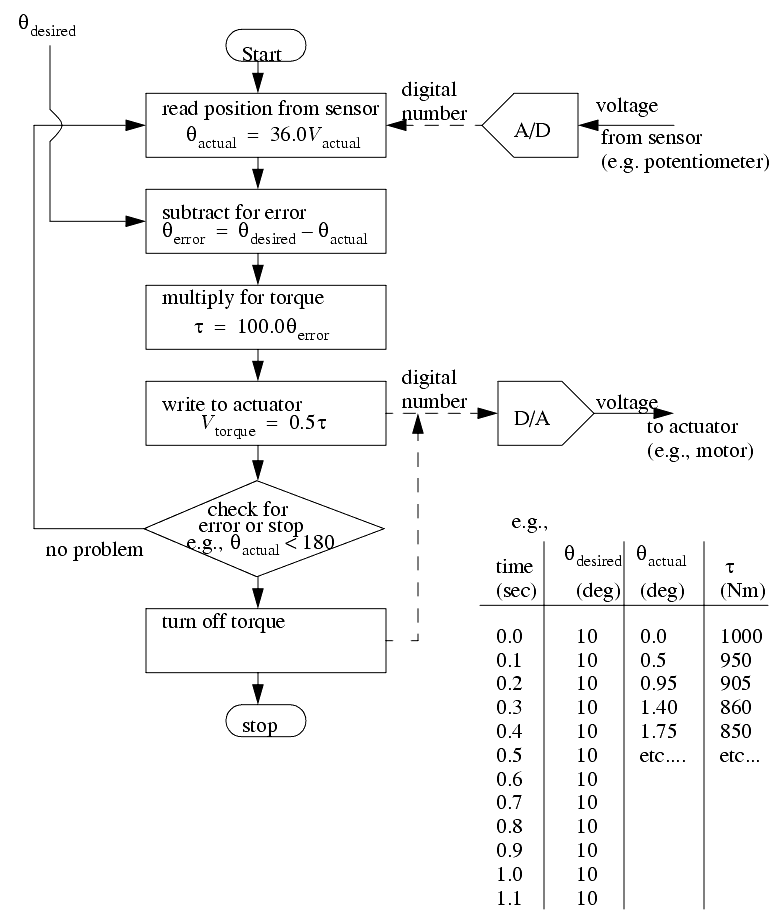
|
|
|
42.1 TRAJECTORY CONTROL
������������Given a set of points, we must move at given speeds.
42.1.1 Resolved Rate Motion Control
������������When the robot motion is important (such as welding applications), the resolved rate method may be useful
This method requires a good model of the manipulator.
The figure below shows an incremental interpolator, based on resolved rate motion control.

42.1.2 Cartesian Motion System
������������The figure below illustrates a system for making motions in cartesian space (straight line).

42.1.3 Model Reference Adaptive Control (MRAC)
������������To compensate for overly complex, or changing systems we can use an adaptive controller

42.1.4 Digital Control System
������������It is more common to use computers to control operations

The computer must examine sensors, then decide how to change outputs to actuators. But, computers can only do one thing at once, so the approach is limited by CPU speed.
Note the controlling computer still needs a control algorithm such as PID, resolved rate, MRAC, etc.
e.g. to control a simple robotic arm with proportional control

Some sensors, such as encoders can return binary numbers to the computer, instead of analog voltages, this leads to more accurate, noise resistant position measurements.
The main functions of the control computer are,
There are two servo loops for each joint,
- the inner loop may consist of an amplifier (voltage or current), a joint drive, and a tachometer for velocity feedback.
- Microprocessor samples the contents of the counter (equal to the BRUs) and transfers this to the computer. The computer compares the counter contents with a program reference to produce the system error. The error signal is fed each ms (for example) to a D/A converter which supplies a voltage proportional to the required axis velocity.
Search for More: |

Custom Search
|

|